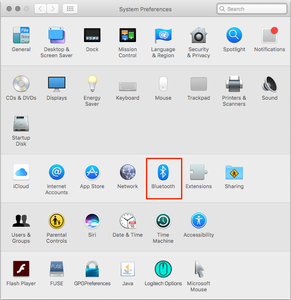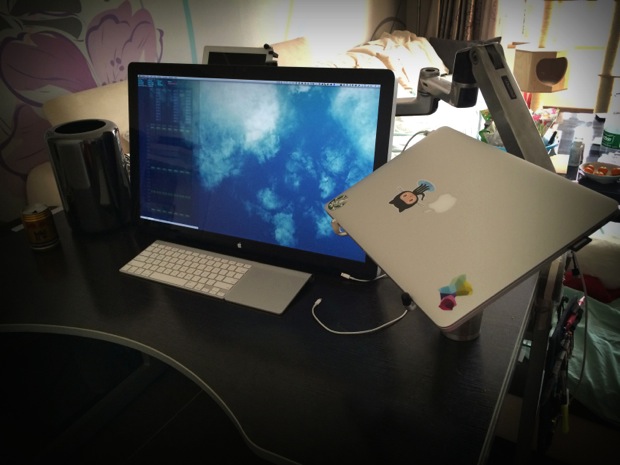OS X 10.10.0 or later. MacBook Pro EFI Firmware Update. For Mid-2012 models. Is this app is similar to MacBook Pro EFI Firmware Update? Vote to improve the.
Best Os For Macbook Pro Mid 2012 Model

- Apple Macbook Pro 13' A1278 Mid-2012 Core i5 2.50GHz 4GB RAM HO HDD NO OS: $1. PLEASE READ BEFORE offerDING!Primetimebuys refurbishes thousands of laptops per month. Units that do not meet our strict quality requirements are sold here on. We will do our best on all sales to list every imperfection so you can offer accordingly.
- I have a similar Macbook Pro 13' mid 2012 purchased in 2015. It has 2.5Ghz Dual Core Intel i5 can I upgrade the RAM and HDD to SSD with the following below? Samsung 860 EVO 1TB M.2 SATA SSD/Solid State Drive. LN4806916GB (2x8GB) Corsair MAC Memory DDR3L SO-DIMM PC3-12800 (1600), 204 Pin, Non-ECC Unbuffered, CAS 11-11-11-30, 1.35V/1.5V.

Best Os For Macbook Pro Mid 2012


Best Used Macbook Pro
Welcome to the forums!
Here is a good guide to Arch Linux on a Mac: https://wiki.archlinux.org/index.php/Mac
And for Debian Linux on a Mac: https://wiki.debian.org/MacBook
My personal recommendation for a new Linux user is Linux Mint. I wasn't able to quickly find a 'Linux Mint on a Mac' guide, but here is some general-purpose info: https://linuxmint.com/documentation.php
My suggestion for your next step is what's called 'distro hopping.' This is sort of a 'rite of passage' for new Linux users. Basically what you want to do is, download several Linux distros and test-drive them in 'Live' mode running from a USB stick. Test which distribution runs best on your hardware, for your needs, and then pick your favorite.
One last thought, 'stable' has a specific meaning in Linux. It means all the software versions are frozen, so you only get bug fixes and security patches, no major upgrades. And then when the next release comes out, you upgrade everything at the same time. It is kind of like, you buy a 2018 model car, all the parts are tested to work together, and then someday when you want a new car, you trade in the entire car and get a completely different model year. Debian Stable, Ubuntu, and Mint are a few examples of 'stable' Linux distros. 'Unstable' on the other hand, doesn't mean 'buggy, unreliable software that will crash your computer'! Rather, it simply means, software is updated as it becomes available. Another term for this is 'rolling release.' Rolling release is kind of like, every time you bring in your car for an oil change, they swap out a few parts, so there is no difference between a well-maintained used car and a brand new one. Arch and Debian Unstable are examples of unstable, rolling release distros. It is up to each user which they prefer. Both have their pros and cons. But please don't misinterpret how 'stable' and 'unstable' are used in the Linux community. It's not as simple as 'stable = good.' Arch as a whole is considered 'rolling release,' not 'stable,' but that doesn't mean they are cramming buggy, untested software down your throat; the individual components are each considered 'stable.'
Here is a good guide to Arch Linux on a Mac: https://wiki.archlinux.org/index.php/Mac
And for Debian Linux on a Mac: https://wiki.debian.org/MacBook
My personal recommendation for a new Linux user is Linux Mint. I wasn't able to quickly find a 'Linux Mint on a Mac' guide, but here is some general-purpose info: https://linuxmint.com/documentation.php
My suggestion for your next step is what's called 'distro hopping.' This is sort of a 'rite of passage' for new Linux users. Basically what you want to do is, download several Linux distros and test-drive them in 'Live' mode running from a USB stick. Test which distribution runs best on your hardware, for your needs, and then pick your favorite.
One last thought, 'stable' has a specific meaning in Linux. It means all the software versions are frozen, so you only get bug fixes and security patches, no major upgrades. And then when the next release comes out, you upgrade everything at the same time. It is kind of like, you buy a 2018 model car, all the parts are tested to work together, and then someday when you want a new car, you trade in the entire car and get a completely different model year. Debian Stable, Ubuntu, and Mint are a few examples of 'stable' Linux distros. 'Unstable' on the other hand, doesn't mean 'buggy, unreliable software that will crash your computer'! Rather, it simply means, software is updated as it becomes available. Another term for this is 'rolling release.' Rolling release is kind of like, every time you bring in your car for an oil change, they swap out a few parts, so there is no difference between a well-maintained used car and a brand new one. Arch and Debian Unstable are examples of unstable, rolling release distros. It is up to each user which they prefer. Both have their pros and cons. But please don't misinterpret how 'stable' and 'unstable' are used in the Linux community. It's not as simple as 'stable = good.' Arch as a whole is considered 'rolling release,' not 'stable,' but that doesn't mean they are cramming buggy, untested software down your throat; the individual components are each considered 'stable.'
